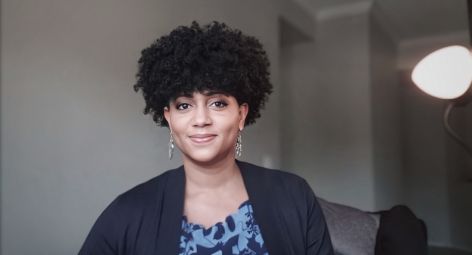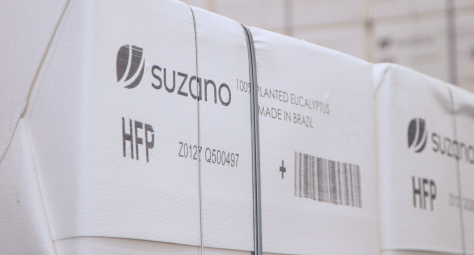sobre o que você deseja falar?


perguntas, sugestões ou problemas técnicos envolvendo a plataforma

informações sobre a empresa


Several countries signed the Kyoto Protocol during the third Conference of the Parties (COP3) to the United Nations Framework Convention on Climate Change (UNFCCC) in 1997. This document established today's mechanism known as the carbon market, making it possible to trade carbon credits generated by reducing emissions or removing carbon dioxide from the atmosphere. This instrument aimed to stimulate the reduction of greenhouse gas (GHG) emissions by assigning a financial value to carbon.
Today, we have multiple ways of trading carbon, which have been organized into two segments: the regulated market and the voluntary market. One of the regulated market modalities is known as cap-and-trade. In this model, markets are established for a country, region, or state where the government or regulatory body sets a GHG emissions reduction target. This target is broken down into different sectors, and an emission limit is set for each sector.
Thus, companies that emit GHGs above the established limit must trade emission allowances (emission unit allowance) from other parties that emit below the permitted limit in the same sector. If the limit is exceeded, carbon credits generated by emissions capture or avoided emissions projects can be bought. Certified emission reductions (CERs) are generated through methodologies established by the Clean Development Mechanism (CDM) administered by UNFCCC bodies.
In November 2024, Bill No. 182/2024 was approved in Brazil, creating the Brazilian Emissions Trading System (SBCE), which consists of the country's regulated carbon market under the cap-and-trade model. This legal framework has been under discussion for years and should begin to function fully in 2030. It defines that companies that emit more than 10,000 tons of carbon dioxide (CO₂) per year will have to submit plans and reports on their emissions, but will not be subject to the new law's restrictions.
Those emitting more than 25,000 tons of CO₂ per year will have to follow the full rules, including the obligation to reduce their emissions. These companies must have enough Brazilian-issued quotas (CBEs) to cover their annual issues in accordance with the National Allocation Plan. Once the CBEs available on the market are exhausted, companies that exceed these limits must offset their emissions by acquiring Certificates of Verified Emission Reduction or Removal (CRVEs), limited to a maximum percentage yet to be defined.
The new legislation will impact the pulp and paper sector in two ways: industrial emissions and carbon removals in forests. The former will require companies in the sector to have enough CBEs to offset their annual emissions and develop long-term emission reduction plans. The second will allow these removals to be used as insetting when calculating net emissions and offsetting in the regulated market, as long as the carbon credits are duly accredited and converted into CRVEs.
The voluntary market has also used the instrument created in the Kyoto Protocol through the CDM and the methodologies proposed for mitigating climate change. Not only the regions but also other entities, such as non-governmental organizations (NGOs) and the private sector, were able to generate credits. Carbon credits aim to mitigate emissions voluntarily.
The leading proponents of methodologies and certifiers are Verra's Verified Carbon Standard (VCS), the Gold Standard, Social Carbon and the Global Carbon Council (GCC), and the UNFCCC's own CDM. An independent third party audits carbon credits and certified emission reductions without ties to the UNFCCC.
In 2021, at the 26th United Nations Climate Change Conference (COP26), the Rule Book for Article 6 of the Paris Agreement was finalized, which regulates the international carbon market and establishes guidelines for cooperation between countries in meeting their climate targets (Nationally Determined Contributions, or NDCs). Since then, the parties and the supervisory body have been working to detail the implementation rules, including criteria for validation, verification and transition of projects from the old CDM. However, challenges such as integrating national and international registries and operationalizing GHG removal activities still need to be resolved.
In December 2024, COP29 was held in Baku (Azerbaijan). One of the meeting's objectives was to follow up on the operationalization of the global carbon market. Among the achievements of this conference, Brazil announced its NDC, establishing a commitment to reduce its GHG emissions by between 59% and 67% by 2035. Many of these reductions will come from combating deforestation and decarbonizing the economy.
Article 6 of the Paris Agreement was also approved, which defines how countries can jointly finance decarbonization actions. In the agreement signed in Baku, it was decided that one country can buy emission reductions from another to help meet its national climate targets. Thus, countries where reducing emissions is more expensive can achieve their targets by investing in actions in countries with lower costs. These transfers will be made in two ways: when the agreement is made directly between countries (ITMOs - article 6.2) or when the purchase is made from private companies (A6.4ERs - article 6.4).
For the coming years, discussions should focus on further defining the operationalization of transactions, especially project registration procedures, negotiation platforms, governance structures, and ensuring project transparency and environmental integrity.
Carbon credits at Suzano
In 2021, Suzano structured its process for creating carbon projects by analyzing the eligibility of potential areas, assessing the applicability of methodologies, and adapting internal processes for implementing and monitoring initiatives. It also ensured fundamental requirements such as additionality, analyzed the risk of non-permanence and unusual practices, and prevented the displacement of polluting activities.
Moreover, the company has established a network of external contacts with potential clients, partners, and interest groups, increasing its representation in associations and forums that specialize in structuring the guidelines of global carbon markets.
Priority was given to developing the first project in the plantation expansion areas of the Cerrado Project, as Suzano's new plant in Ribas do Rio Pardo (MS) is called, which began operating in July 2024. In 2022, the company finalized the design of the Cerrado Carbon Project together with another project of the same scope, called Horizonte, located in Três Lagoas (MS). Both reforestation projects were audited by an independent third party for validation and verification, and were submitted for final registration on Verra's platform.
It is important to note that these projects generate social and environmental benefits in addition to fighting climate change. The actions that unfold from these co-benefits can be reflected in improved air quality, water regulation, biodiversity conservation, waste management, income generation and the empowerment of social actors. Both carbon initiatives will enhance Suzano's current practices with elements that go beyond the usual, integrating three dimensions:
Suzano's forest stewardship combines productive efficiency with social and environmental commitment, guaranteeing socially responsible and environmentally correct practices. In general, it advocates innovation through the use of advanced genetic techniques and silvicultural models and respects the socio-environmental characteristics of the region in which it operates. Moreover, the company is dedicated to forest preservation by monitoring biodiversity and protecting micro-watersheds.
In the socio-economic sphere, it prioritizes dialogue with local communities and develops social initiatives that benefit the areas close to its management operations. It is worth emphasizing that Suzano will seek certification from the Forest Stewardship Council® (FSC®) or PEFC/Cerflor for all its areas covered by carbon projects. Efforts are already being made to achieve this goal.
Finally, financing activities linked to carbon initiatives will be Suzano's responsibility, which will allocate resources to the socio-environmental actions mentioned above, in addition to the costs related to commercial planting. To this end, the company carries out financial planning to direct part of the funds from the sale of credits to social projects, forestry activities, and commercial planting. Carbon asset transactions occur after the verification audit has been completed, in which a third party certifies that the project has complied with the requirements of the certification adopted.
It should be noted that Suzano does not consider using carbon credits for offsetting and, therefore, meets its emissions targets.
Carbon Horizon Project
In 2022, Suzano prepared the Carbon Horizon Project - based on the ACM0003 methodology for Afforestation, Reforestation and Revegetation (ARR) of the Clean Development Mechanism - which was submitted for certification by Verra.
The carbon initiative is within the scope of the Três Lagoas (MS) plant. It aims to promote reforestation in an integrated landscape, combining the planting of fast-growing species—in this case, eucalyptus—with the planting of species native to the Cerrado biome. Furthermore, it promotes socio-economic actions aimed at the communities close to the project.
The environmental restoration proposed for the Cerrado biome focuses on recovering degraded areas, through activities aimed at controlling erosion processes, combating invasive exotic species, promoting natural regeneration and planting native species. The rehabilitation practices starting in 2023 adopt a methodological approach based on ecological succession, whose process is sustained by natural recovery for the balance of ecosystems. For this reason, the restoration approaches have the support of Agroícone, the general coordinator of the Seed Path initiative.
Initially, a preliminary diagnosis of the areas eligible for the development of the carbon initiative was carried out, using drone surveying and expert analysis of the results, ensuring assertiveness in choosing the most appropriate restoration method according to local characteristics.
In this context, direct sowing (also known as muvuca), using seeds from the Seed Network, followed the established technical guidelines. Continuous field monitoring, also carried out in partnership with Agroícone, guarantees an appropriate assessment of the degree of sustainability of areas undergoing restoration and guides the recommendation of adaptive management.
It is worth mentioning that both implementation and monitoring meet the requirements of state legislation, ensuring alignment with the Environmental Regularization Program (PRA). Additionally, through strategic partnerships, Suzano has been evaluating alternative restoration techniques that can guarantee a favorable cost-benefit ratio, such as aerial seeding via drone.
Finally, the social projects under development in the Três Lagoas region that are promoted through carbon credit revenues are:
More information on this initiative can be found at the following links:
It is worth mentioning that the carbon credits from the Horizon Project are being negotiated on the market with companies aligned with climate change strategies and decarbonization targets. Also, some of the assets generated by this project have been used in internal initiatives to neutralize different types of product, such as the copies printed with the new Pollen® Paper of the books Em Defesa do Tempo (In Defense of Time), É Assim que Começa (This is How It Begins) and Uma Boa Vida (A Good Life). The number of credits sold or retired can be seen in the table below. The numbers of credits sold or retired are in the table below.
Cerrado Carbon Project
In 2021, Suzano started the Cerrado Carbon Project - based on the Clean Development Mechanism's ACM0003 Afforestation, Reforestation and Revegetation (ARR) methodology - which was submitted for Verra certification.
The carbon initiative is located in the municipality of Ribas do Rio Pardo (MS) and promotes the implementation of an integrated landscape, combining the planting of fast-growing species - in this case, eucalyptus - with environmental conservation and restoration. It also encourages socio-economic actions aimed at the communities close to the project.
The social projects under development in the Ribas do Rio Pardo region that will be promoted through carbon credit revenue are:
You can find more information about this initiative at the following links:
It is worth mentioning that the Cerrado Carbon Project is currently inactive due to the developer's strategic redefinition.
The table below shows the results achieved by the Carbon Horizon Project, which has already been secured in the verification processes.
| 2023 | 2024 | |
|---|---|---|
| tCO₂e | tCO₂e | |
|
Verified total GHG removals |
1.900.911,33 |
1.900.911,33 |
|
Buffer² |
190.095,00 |
190.095,00 |
|
VCUs³ verified |
1.710.813,00 |
1.710.813,00 |
|
VCUs sold or retired⁴ |
25.139,00 |
44.719,00 |
Guidelines for generating credit
Suzano is working to combat climate change through carbon initiatives. Among some of the gases that cause the greenhouse effect, the main one is carbon dioxide (CO₂), which is used as a standard measure for carbon credits. Therefore, 1 tonne of CO₂ equivalent not emitted or removed from the atmosphere corresponds to 1 carbon credit.
For this asset to be certified, it is necessary to develop a project following specific methodologies and respecting integrity criteria, the main ones being:
The Horizonte Project, active in generating credits, ensures the credibility and integrity of the assets by strictly following the criteria described above. To guarantee eligibility, a detailed analysis of land use and occupation confirms that there have been no changes in the project area ten years before its start.
Within the safeguards framework, consultations and periodic communications with stakeholders maintain continuous contact. This is complemented by the open Relacione+ channel, which allows for the reporting of occurrences and the forwarding of demands.
The criterion of permanence is low risk, supported by the company's extensive experience managing large areas of eucalyptus and native forests accumulated throughout its history, more significant than the project's life cycle of 40 years. Advanced technologies make it possible to accurately monitor assets and anticipate risks such as fires, minimizing negative impacts. In addition, solid contracts with partners guarantee commitment to the scope of the carbon project.
Finally, it is essential to highlight the project's additionality, evidenced both in its mitigation of climate change and in its positive impacts on society and the environment. These benefits include the recovery of the Cerrado biome, biodiversity conservation, sustainable waste management, and the strengthening of the local economy and territorial development.
Eucalyptus: